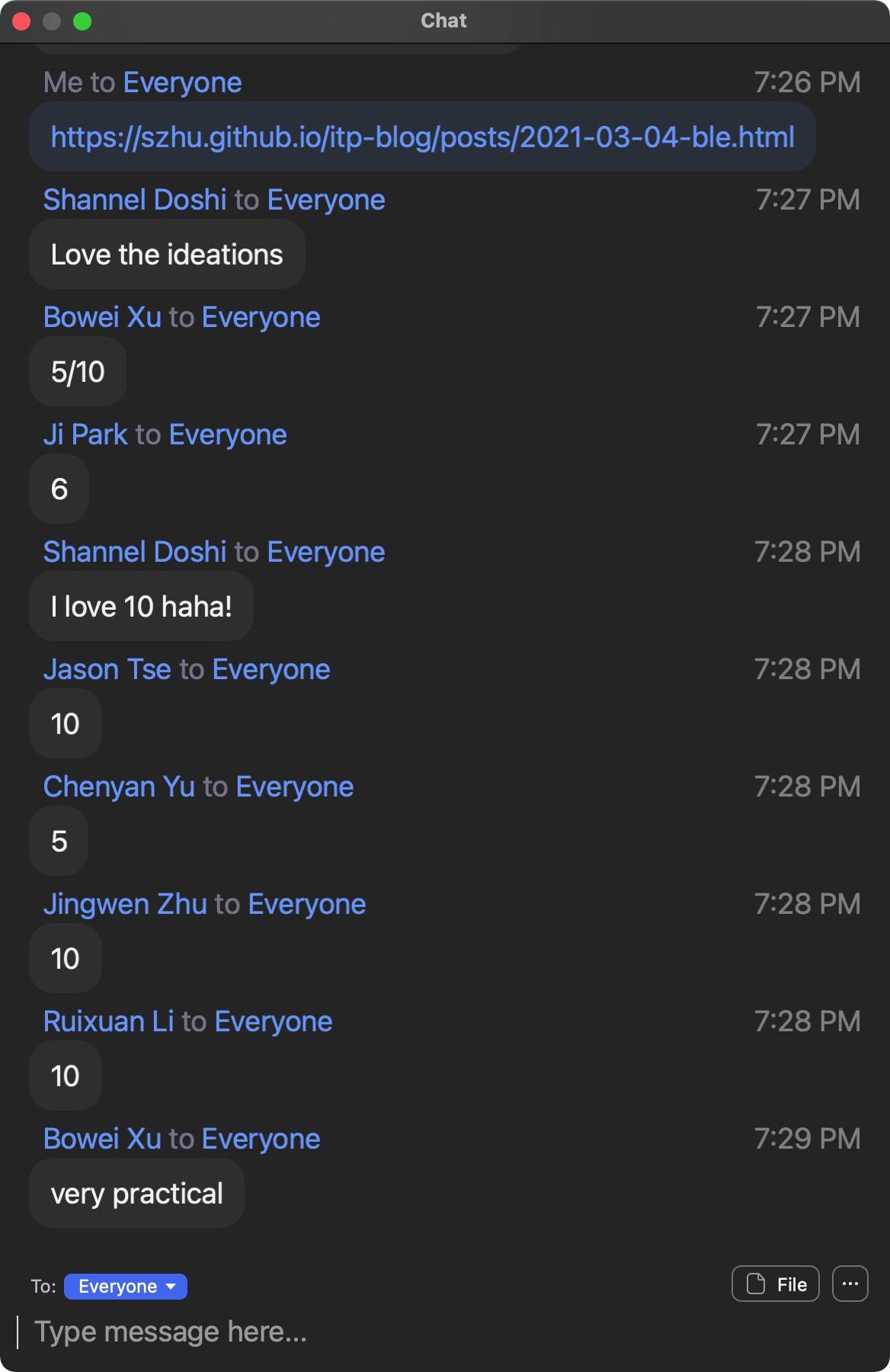This week's assignment was to come up with ideas for the final project. I haven't committed to an idea yet, but instead, I came up with some possibilities:
- NFC tags that allow blind people to identify objects when they hold the phone close to them. (Related to Looking Forward, a course I am taking about designing for blind users.)
- Extensions of Apple's Continuity/Handoff technology. For example, clicking a link on a phone can open an app on the computer. Or implementing something like Airdrop for non-iOS devices. Or a third-party device that pretends to be an Airdrop target, but does something else with the Airdropped file. (For example, in a party setting, users can use this to send track names to the DJ.)
- Locking the laptop as the phone moves away. (Related to a project I made for PComp. Ideation → Final version.)
- Social networking (post-pandemic). Exchange business cards, see what people around you are saying. Chatter for conference-style events. (Bluetooth would be used to sense who's nearby, but content posted to a central server to allow for moderation and reporting.) Or, an app that notifies users if they tend to be in the same place at the same time, so that they can consider carpooling together in the future.
- An art/science installation consisting of an array of BLE-enabled devices, like phones or Arduinos. The devices interact with nearby neighboring devices similarly to how organisms in a population or ecosystem interact, simulating life. (See Conway's Game of Life, which does something similar.)
- A night light or home light that turns on if your phone is nearby. This could be useful because if you carry your phone on you, it can potentially sense your presence much further away than motion sensors can, especially if there are obstructions. Such a system can turn on your interior lights to your home before you even open the door. (Related to an assignment I did for Intangible Interactions.)
- BLE beacons or NFC tags that allow a device to behave differently when placed in different locations. For example, when a laptop is brought into a meeting room, popup notifications are disabled, and when it is brought near a TV, it casts/AirPlays to that TV.
- A secondary or alternate (wired or Bluetooth) HID device that allows for richer and more direct interaction with the computer. For example, there can be dedicated physical controls for closing the current window or moving it around.
- An app that shows how crowded the nearby Wi-Fi spectrum is. This can be useful to tell certain people that "your Wi-Fi is slow but upgrading your router won't help, the problem is that there are too many Wi-Fi devices in this area".
- A box that can be used to drop off messages for a physical office, event, etc. It be like an anonymous feedback box or like leaving flyers on a fridge. Content moderation, access, and security are a lot easier if using Bluetooth or NFC instead of having messages be submitted online, because we know that anyone who is leaving messages necessarily has physical proximity to the box. This can potentially be also used for voting ("tap here to take a ballot so you can cast it later") and line queueing ("tap here to take a ticket").
- Same-room audio feedback prevention: A computer application that, when joining a Zoom call, detects whether other people nearby are on the same Zoom call. When someone is speaking, the application mutes the mic and Zoom volume on all nearby devices that are also running the application.
- A beacon and app system that allows users entering a venue to immediately connect to the event-provided Wi-Fi network.
- An "I need help" button for physical classrooms so that students can quickly give simple, private-ish feedback to the instructor. This can help students who are too shy to give feedback and prevents attention-seeking students/class clowns from dominating the room. (Shy students probably need to learn how to deal with these kinds of other students, but their inability to do so should not block them from learning everything else they need to learn in the classroom.) As a side effect, using systems like this can make students more familiar with how the dynamics of anonymous voting work, and make students more aware of minority opinions among their peers.
Update: I polled the class to figure out which project would be most interesting and relatable. Idea 10 won!
